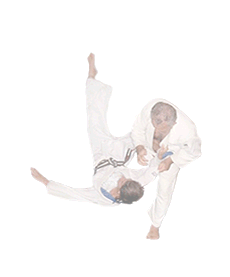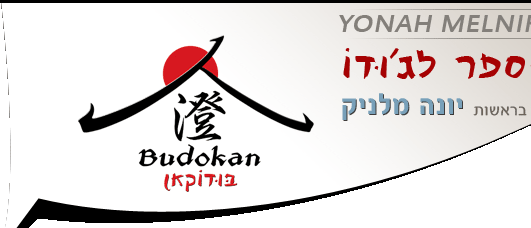



|
| Principles of Judo Training In Adolescence
By: Sensei Yonah Melnik This article describes the principles and guidelines of competitive judo training for adolescents, as applied at the "Center for gifted young athletes" at the Wingate Institute for Physical Education. A frequently asked question is: when should judo training start? Researches indicate that the optimal age for starting judo is between 9 - 10 years of age. Before this age, learning judo techniques is not an aim for itself, and it should serve the basic needs of developing general physical abilities for kids.For more information on this topic we suggest another article: Judo for Kids. Judo training is characterized by at least two specific factors, which have to be considered in every training program. - The judoka gets to its peak performance at a later age, comparing to other sports. The maturation of the judoka is a long and gradual process, arriving to its peak between ages 23 - 28 and even later. We have seen olympic champions of 30, 31 and even 33 years. - Among all individual sports, judo requires a wide range of physical abilities. Thus the training process will be influenced by the specific characteristics of every single athlete. Each one has a different mixture of body structure, strength, agility, speed, flexibility, technical ability and skills, and special techniques (Tukuy-Waza). Each one of these elements can be developed to different extents, and one specially developed element can stand for others, less developed. This will build a special mosaic for every athlete and has to be considered by the coach in charge of the training program. In any case, judo training is mounted on three pillars:
1. General movement repertoire 2. Special individual techniques fitted to every single judoka 3. Physical ability components 1. The General Movement Repertoire
The general movement repertoire is the basis for judo skills. It is based on learning and exercising motion on the mat, through a selection of basic techniques. The goal is to develop the right posture and stability of the judoka, the biomechanical efficiency of his motion and his timing skills. 2. Specific Techniques
On this basic judo motion, each judoka will naturally develop, according to his personal characteristics, a very few specific techniques. Those will be his special competitive techniques (Tukuy- Waza). 3. Physical ability components
The training of the two first elements will always go side by side with the training of the various components of physical abilities. This includes: various ranges of running, weights, and games. These three elements are intermingled together, and together compose a special unity of judo training. There are not only dependent one on the other, but also enhance and nurture one another. When the physical ability of the judoka improves, it will significantly improve his motion skills and will even add new elements to the repertoire. A wide basic repertoire of motion, is the basis for the emerging, in time, of the Tukuy-Waza, which in turn, will bring by itself a momentum to the continuing development of the basic motion, which in turn, will enhance the efficiency of the Tukuy-Waza. The same is correct for the inter-relationship between the physical ability and the Tukuy-Waza: specific weight training aimed to explosive force is used to give power and efficiency to the personal competitive techniques of the judoka. This will open a cycle of mutual enhancement which may, in time, enrich the technical repertoire of the judoka with a new Tukuy-Waza! The coach is responsible
for finding the right way in this complexity. He must know the correct dosage of each element in the unity of the training program, the right timing for introducing it and the right proportion of the various elements in the program. Each element has a different importance and weight according to the age of the judoka, his developmental phase, and the period of training. Here we get to a principal question about judo training - WHEN? As we already mentioned, the ideal age for beginning is around 10 years. Until age 13, about starting adolescence, the training must be completely general. The aim for this period is solely to develop a motion repertoire, and we should avoid trying to acquire specific techniques. The judoka will exercise a basic range of techniques, and the focus will be on the quality and exactness of the motion. He will also widen quality an efficiency of each technique by working in various situations and directions. The principle is: provided the repertoire is of high quality, it will be easily extended. This phase should be supported by general physical abilities training, which is a tool and not a goal by itself. We have to bear in mind that judo training by itself is a very efficient way to develop basic elements of physical abilities. Approaching 13 years
of age, the coach can try, gradually, to bring a specific technique to the level of Tukuy-Waza, according to the tendencies of the judoka, without neglecting the rest of the repertoire, which will still be in favor. By 15 years
when the judoka is already in his adolescent phase, the competitive aspect of judo starts to get more importance and focus. It's time to work seriously on specific competitive skills and techniques, personally suitable for each individual judoka. At this age, it is already possible to identify personal tendencies and different particular styles. Some will tend toward hand techniques, others for shoulder techniques and so on. Even in this phase it is important not to neglect the rest of the repertoire. About 18 years
it is very important that the judoka concentrate on developing strong and efficient Tukuy-Waza, he will use in competition. He has to reinforce them, and to be able to use them efficiently in various conditions and situations. At this stage, components of physical abilities become very important and require special training. Especially weights to improve maximum force and explosive force, and running to develop a high aerobic capacity. The need for speed and explosive force will be manifested also in judo sessions in different kinds of training methods. From time to time the coach will concentrate on a single technique, not necessarily for improving this specific technique as for improving elements of the motion of the judoka, which he detects as unsatisfactory. In the same manner the coach should include various games (as ball games) in the program, in order to work on physical abilities and to prevent monotony in the training sessions. Along the whole process the principles are: · right dosage · right timing in introducing various elements · variabilty. The coach must use these principles in order to optimally utilize the over-compensation mechanism, and get the best results. Keeping these principles will also prevent early burnout of the judoka and quitting, injured and tired, which occurs many times when the coach tries to accelerate the process and to achieve too early competitive success. Hurrying the process is associated with neglecting the quality of the technical basis, and working again and again on distorted and rough technique, put the judoka under a regimen of "hard work". He will get tired and injured, he will not enjoy his training and the way to burnout is short.
|






